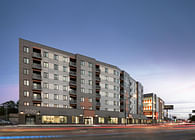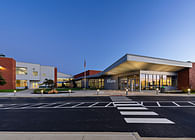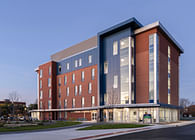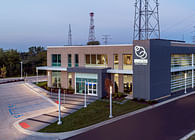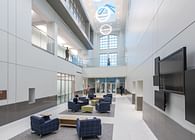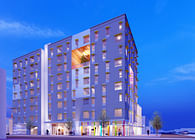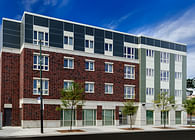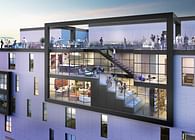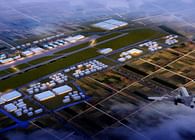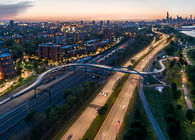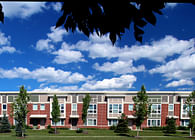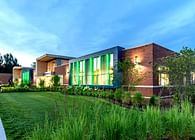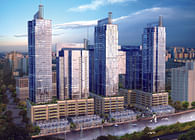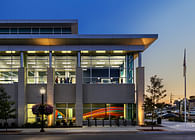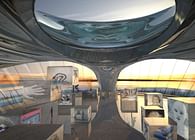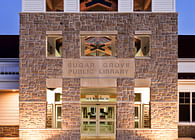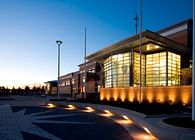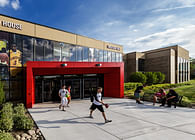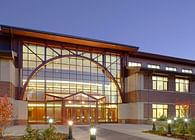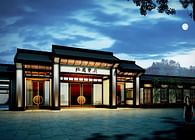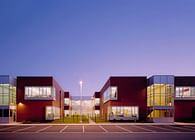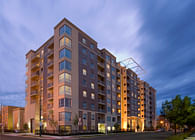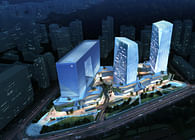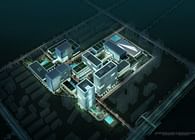
Chicago, IL | Aurora, IL | Lafayette, IN
Cordogan Clark & Associates Architects created a state-of-the-art architectural design for the new I-294 Tollway oasis travel pavilions. The overall design of the Tollway pavilions creates a strong form suggesting a gateway that is easily recognizable from a distance.
The design is streamlined, progressive, and dramatic. The travel pavilions serve as a bridge between the rich history of Illinois and a powerful, public vision of its future. Traditionally, transportation terminals have been gateways that celebrate travel and arrival.
The challenge was to seamlessly incorporate the latest advances in technology with the sense of excitement generated when the concept of transportation centers first emerged. The architecture draws on several sources of inspiration in the design of the travel pavilions. These sources form a timeline from an era when railroads dominated, to a future where motorists will leverage the latest advances in technologies.
The pavilion arches span the Tollway. Transparent low-e glazing affords views into and through the pavilion, highlighting the concourse as an attractive and exciting place to visit. Generous glass areas facing the expressway highlight views of the activity and tenants within. The high interior volume and generous natural light creates an “open air street market” atmosphere for the individual retailers. Independent expression of the retailers creates a relaxed, festive, welcoming atmosphere.
The pavilions are "buttressed" on either side of the Tollway by core elements clad with wheat colored brick. These elements visually support and reinforce the arch. These are lower scaled; appropriate in height for the food service, entry vestibule, and toilet facilities they house. Indirect lighting is incorporated into the horizontal detailing of these cores for nighttime emphasis and security.
Inside the pavilions, exposed arch-formed steel truss framing provides a framework for hanging banners and displays. The concourse with its exposed trusses is reminiscent of great nineteenth century transportation halls, yet is updated for the new millennium. Indirect lighting is incorporated into the steel trusswork. This will prevent distracting glare for concourse patrons and passing motorists.
Individual kiosks feature lower radiused "ceiling " elements comprised of wood, acoustical panels, white aluminum, and translucent panels. These too are indirectly illuminated, highlighting the kiosks as individual activity areas. At night, the indirect lighting of the arched trusses and individual kiosks create a dramatic and attractive environment. The interior walls, floors, and ceilings of the pavilion are developed as a friendly yet neutral backdrop, designed to highlight the individual tenants and activity centers.
The site design encourages efficient use. Drive-through service is added to speed sales transactions and help ease parking impact.
The landscaping features native salt-resistant and drought-tolerant planting, including prairie grasses and flowering perennials. This eases maintenance while creating a lush, ecologically friendly atmosphere.
Cordogan Clark & Associates teamed Wilton partners, a national commercial real estate company, and Exxon Mobil, for this project, and its design was selected for the redevelopment of the Illinois State Toll highway oases following a national design-build competition.
Status: Built
Location: Chicago, IL, US
Firm Role: Architects, Engineers
Additional Credits: Mchugh Construction, General Contractors
Mark Ballogg, Photographer
